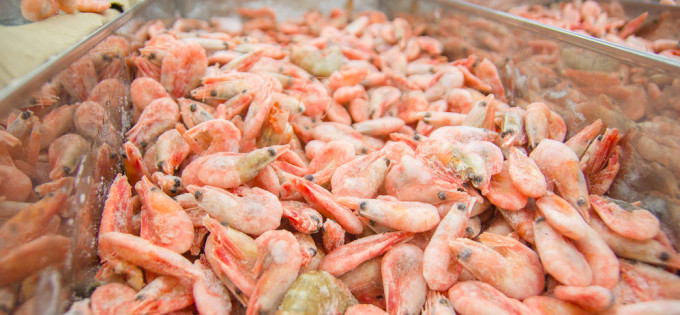All types of food would be included: meat, produce, seafood, and processed food.
What countries are involved?
The TPP would include Australia, Brunei, Canada, Chile, Japan, Malaysia, Mexico, New Zealand, Peru, Singapore, and Vietnam. Once the agreement is in place, other countries could join. According to Woodall, those that have expressed interest include China, Indonesia, Korea, the Philippines, and Thailand.
The TTIP, on the other hand, would include the 28 countries of the European Union.
The U.S. already has free trade agreements with many of these countries. But the new agreements would supplement those currently in place and it’s expected that TPP and TTIP rules would prevail.
How do these agreements work?
The goal of the TPP -- like other such free trade deals -- is to make it easier for countries to export their products to others in the agreements. It does so by removing “barriers to trade,” like import taxes and other regulations that can make it difficult to export or import certain products.
Center for Food Safety’s international director, Debbie Barker, says it’s important to remember that the TPP and TTIP, “like other modern day trade agreements, have gone beyond the historical role of dealing with tariffs and quotas.” This means softening or even doing away with regulations in order to facilitate trade.
When it comes to food, this could mean relaxing rules that limit pesticide residue on produce, restrict antibiotic, pharmaceutical or other chemical use in aquaculture and livestock production or additives, including nanomaterials in food processing. It could also interfere with labeling requirements.
For example, the TTIP could potentially lead to reducing EU requirements for labeling food containing genetically engineered ingredients and nanomaterials. It could also relax rules for meat produced with certain antibiotics and hormones, poultry raised on feed additives that contain arsenic, and meat produced with a growth-promoting drug called ractopamine.
These agreements could also threaten labeling programs designed to promote locally produced food.
The TPP and TTIP also include provisions that allow countries and businesses to challenge new regulations considered obstacles to trade that would adversely affect anticipated profits.
How do the two agreements differ?
In the U.S., consumer advocates are concerned that the TPP will mean less safe food imported into the U.S. In Europe, there’s concern that the TTIP will relax the EU’s more stringent standards for meat, pesticides, and GMOs.
Overall, the EU’s approach to food safety and chemicals is considered more precautionary than the United States’. But what’s allowed, say, in Asian aquaculture, is considered less stringent than what’s allowed in the U.S. Yet there are also countries in the TPP with policies that could restrict imports of U.S. products -- such as Peru, which requires labeling of food containing GMOs and Japan, which has stringent food additive standards.
It’s likely that both agreements will lower the standards for food safety across the board, simply to allow more food to be imported and exported between the partner nations.
Would these trade agreements make our food less safe?
That is the concern of U.S. Representatives Rosa DeLauro (D-Connecticut), Chellie Pingree (D-Maine), and Louise Slaughter (D-New York), who held a press conference last week.
The section of the TPP that covers food safety has these members of Congress -- along with many environmental and consumer advocates -- worried. “Trade trumps food safety,” DeLauro said of the TPP.
The U.S. Trade Representative -- the White House office that negotiates trade agreements -- has compiled an enormous list of these “non-tariff” trade barriers. They include treatments required to protect against pathogens, use of specific drugs in livestock, required disease testing methods, regulations restricting biotechnology (including genetic engineering), food additives, and shelf-life standards.
Why is seafood a particular concern?
Because about 90 percent of the seafood Americans consume is imported, especially from countries in the TPP, the agreement could affect the shrimp, tilapia, crab, catfish, tuna, and lots of other types of seafood filling supermarket freezers.
While current U.S. regulations require country of origin labeling for imported meat, fish, and produce, “processed” seafood is exempt from these requirements. That means fish sticks, canned tuna, frozen boiled shrimp or any seafood that’s been cooked or prepared in any way, is exempt from COOL requirements.
In 2012, the U.S. imported about 2 billion pounds of seafood from TPP countries. Shrimp, tuna, and farmed freshwater fish are the leading U.S. seafood imports. Much of this comes from Asia; TPP could mean even more.
While there are rules that essentially say imported meat and eggs have to meet safety standards that are equivalent to those in the U.S., there are no such rules for seafood.
And, as has happened with country of origin requirements for meat, these regulations can be challenged under free trade agreements like the TPP and TTIP.
Why are increased imports a concern?
Under the current volume of food imports, the U.S. Food and Drug Administration (FDA) physically inspects only about 2 percent of imported food. The concern is that if import volumes grow -- as they have under other free trade deals, including NAFTA -- even less will be inspected.
What happens next?
If “fast-track” authority passes both the House and Senate, the TPP and TTIP could be submitted to Congress for a vote that would have to come within 90 days.
The Obama administration is promoting these agreements as boons to U.S. businesses -- including farmers and ranchers -- large and small. While many businesses are looking forward to increasing exports, consumer, environmental, and labor advocates and not a few members of Congress say the trade deals are not such a good deal.
American consumers are now demanding transparency in food sourcing and want more local food, says Representative Chellie Pingree. Flooding the marketplace with “cheap imports” with no ability for consumers to tell the difference is not what they want, she says. “Once the damage is done, it will be very hard to undo.”
About the Writer
